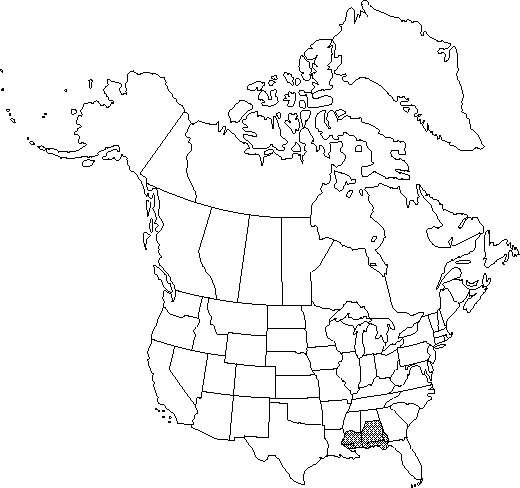Difference between revisions of "Illicium floridanum"
Philos. Trans. 60: 524. 1770.
FNA>Volume Importer |
imported>Volume Importer |
||
| (6 intermediate revisions by 2 users not shown) | |||
| Line 10: | Line 10: | ||
|special_status={{Treatment/ID/Special_status | |special_status={{Treatment/ID/Special_status | ||
|code=F | |code=F | ||
| − | |label= | + | |label=Illustrated |
}} | }} | ||
|basionyms= | |basionyms= | ||
| Line 16: | Line 16: | ||
|name=Badianifera floridana | |name=Badianifera floridana | ||
|authority=(J. Ellis) Kuntze | |authority=(J. Ellis) Kuntze | ||
| − | }}{{Treatment/ID/Synonym | + | |rank=species |
| + | }} {{Treatment/ID/Synonym | ||
|name=Illicium mexicanum | |name=Illicium mexicanum | ||
|authority=A. C. Smith | |authority=A. C. Smith | ||
| + | |rank=species | ||
}} | }} | ||
|hierarchy=Illiciaceae;Illicium;Illicium floridanum | |hierarchy=Illiciaceae;Illicium;Illicium floridanum | ||
| Line 34: | Line 36: | ||
|elevation=0-500 m | |elevation=0-500 m | ||
|distribution=Ala.;Fla.;Ga.;La.;Miss.;ne Mexico. | |distribution=Ala.;Fla.;Ga.;La.;Miss.;ne Mexico. | ||
| − | |discussion=<p>Illicium floridanum was placed in Illicium sect. Badiana by A. C. Smith (1947). The flowers of the species are pollinated by a variety of insects; fruit set is low (L. B. Thien et al. 1983). The seeds are dispersed by explosive dehiscence of the follicles (M. L. Roberts and R. R. Haynes 1983).</p><!-- | + | |discussion=<p><i>Illicium floridanum</i> was placed in <i>Illicium</i> sect. Badiana by A. C. Smith (1947). The flowers of the species are pollinated by a variety of insects; fruit set is low (L. B. Thien et al. 1983). The seeds are dispersed by explosive dehiscence of the follicles (M. L. Roberts and R. R. Haynes 1983).</p><!-- |
| − | --><p>This species is cultivated in southeastern United States (M. A. Dirr 1986) and elsewhere. Illicium mexicanum A. C. Smith was considered a separate species by A. C. Smith (1947); expressions of all characters used to differentiate the two species overlap, however, and it seems best to consider them conspecific.</p> | + | --><p>This species is cultivated in southeastern United States (M. A. Dirr 1986) and elsewhere. <i>Illicium</i> mexicanum A. C. Smith was considered a separate species by A. C. Smith (1947); expressions of all characters used to differentiate the two species overlap, however, and it seems best to consider them conspecific.</p> |
|tables= | |tables= | ||
|references= | |references= | ||
| Line 44: | Line 46: | ||
-->{{#Taxon: | -->{{#Taxon: | ||
name=Illicium floridanum | name=Illicium floridanum | ||
| − | |||
|authority=J. Ellis | |authority=J. Ellis | ||
|rank=species | |rank=species | ||
| Line 58: | Line 59: | ||
|publication title=Philos. Trans. | |publication title=Philos. Trans. | ||
|publication year=1770 | |publication year=1770 | ||
| − | |special status= | + | |special status=Illustrated |
| − | |source xml=https:// | + | |source xml=https://bitbucket.org/aafc-mbb/fna-data-curation/src/2e0870ddd59836b60bcf96646a41e87ea5a5943a/coarse_grained_fna_xml/V3/V3_161.xml |
|genus=Illicium | |genus=Illicium | ||
|species=Illicium floridanum | |species=Illicium floridanum | ||
Latest revision as of 22:46, 5 November 2020
Leaves: petiole 6-26 mm. Leaf blade dark olive-green, elliptic to lanceolate, 5-21 × 1.5-6 cm, base cuneate, apex acute to acuminate. Flowers 2.5-5 cm diam.; peduncle 1-11 cm; bracteoles 3-6; tepals 21-33, red-maroon, rarely white or pink, inner tepals ligulate; stamens 25-50; pistils 11-21. Fruit aggregates collectively 2.5-4 cm diam., usually with 10-15 pistils at maturity. Seeds pale brown. 2n = 26.
Phenology: Flowering midspring–early summer.
Habitat: Along streams, in marshy areas, moist woods
Elevation: 0-500 m
Distribution

Ala., Fla., Ga., La., Miss., ne Mexico.
Discussion
Illicium floridanum was placed in Illicium sect. Badiana by A. C. Smith (1947). The flowers of the species are pollinated by a variety of insects; fruit set is low (L. B. Thien et al. 1983). The seeds are dispersed by explosive dehiscence of the follicles (M. L. Roberts and R. R. Haynes 1983).
This species is cultivated in southeastern United States (M. A. Dirr 1986) and elsewhere. Illicium mexicanum A. C. Smith was considered a separate species by A. C. Smith (1947); expressions of all characters used to differentiate the two species overlap, however, and it seems best to consider them conspecific.
Selected References
None.
